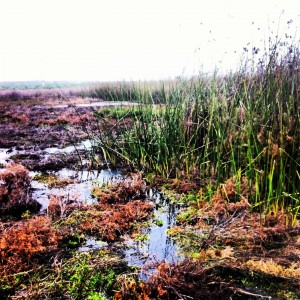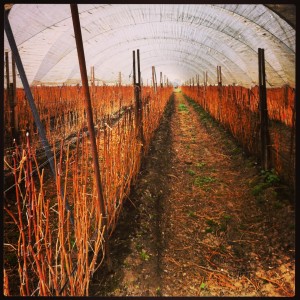Archive for February, 2013
Ag/Water Nexus
Lessons from the Central Coast
The Central Coast is home to some of the most productive agriculture land in the world, accounting for over $5 billion in direct economic output in 2011 in Monterey County alone. Yet it’s also a biodiversity hotspot, and home to the Monterey Bay Marine Sanctuary which attracts divers and vacationers from around the world. Water is a finite resource in this unique region, and affects many different stakeholders throughout the region. During our weekend workshop, we investigated some of the trade-off between agricultural productivity and environmental health, delved into watersheds, and talked a lot about water policy.
We also heard from some great guest speakers, including Karen Lowell who gave us a great overview of agriculture on the central valley. She also emphasized the human element of conservation, talking about the trust and credibility that has to be earned between partnerships before any progress can be made. As she so eloquently put it, “conservation is a conversation.” Lisa Lurie spoke with us about the Ag waiver, and different water quality issues in the Monterey Bay.
Sunday was mostly taken up by field trips. We checked out a wetland water treatment restoration project and learned about all the different policy hoops that have to be jumped through to create a project like that. From there we headed over to Driscoll’s where we spoke with Emily Paddock about some of the water initiatives that Driscoll’s is working on. We learned about managed aquifer recharge, which is important in their region, since their water basin is historically over-drafted.
DPMI
First things first… what’s with all the acronyms at MIIS? Oh man, I just used another one! Seriously though, the school has an acronym (MIIS), my degree has an acronym (IEP) and this cool program I did over my j-term has an acronym (DPMI). But what exactly does it mean? Well, I’m glad you asked… Development Project Management Institute. But what exactly does that mean?
Well, to quote the DPMI website “DPMI, is a professional certificate program that combines guided individual readings (completed prior to the commencement of class meetings), three weeks of intensive classroom instruction, and a personal reflection paper submitted three months after the conclusion of classroom work. The intensive DPMI training, organized as three separate modules, lasts three weeks: Managing Development Projects, Social Entrepreneurship and Strategic Partnering, and Facilitating Participatory Development.”
Which means for three straight weeks I was in a classroom from 9-5 learning new concepts and then turning around and immediately practicing how to use them. The first week we worked in “country teams” to develop an entire project design by going through the process of creating a problem tree and results framework for a specific problem in our target country. By the end of the week my Nepal team presented our proposed project, complete with strategic objectives, indicators, a sustainability plan and an exit strategy for improving maternal health in rural Nepal. The deliverables from the first week can be found on my dpmi website.
Week two was all about Social Enterprising, which meant that we formed groups around specific interests and then had to form partnerships between the groups. These matches weren’t all perfectly intuitive. My group was representing Rare Conservation, and ended up partnering with NDI (National Democratic Institute) and FSD (Foundation for Sustainable Development)–not necessarily a natural partnership. By the end of the week in these new, diverse partnerships we had come up with a proposal and presentation for the Rockefeller Foundation. Our meta-group proposed an innovative girls empowerment project that focused on environmental and health outcomes, with the girls as the drivers of change.
Facilitation was the heart of the third week. And what’s the best way to learn facilitation? By facilitating. Each day we learned new facilitation techniques and then immediately tried them out. We learned, and experienced, the importance of facilitating participation as part of a development plan. Facilitation is what brings all these ideas and projects together, and makes sure the local people are invested, interested, and willing to carry the project forward.
Overall it was a very intense three weeks, but the respected practitioners that taught the course and the diversity within my peers ensured it was a rich and rewarding learning experience.
You are currently browsing the tami weiss blog archives for February, 2013.




